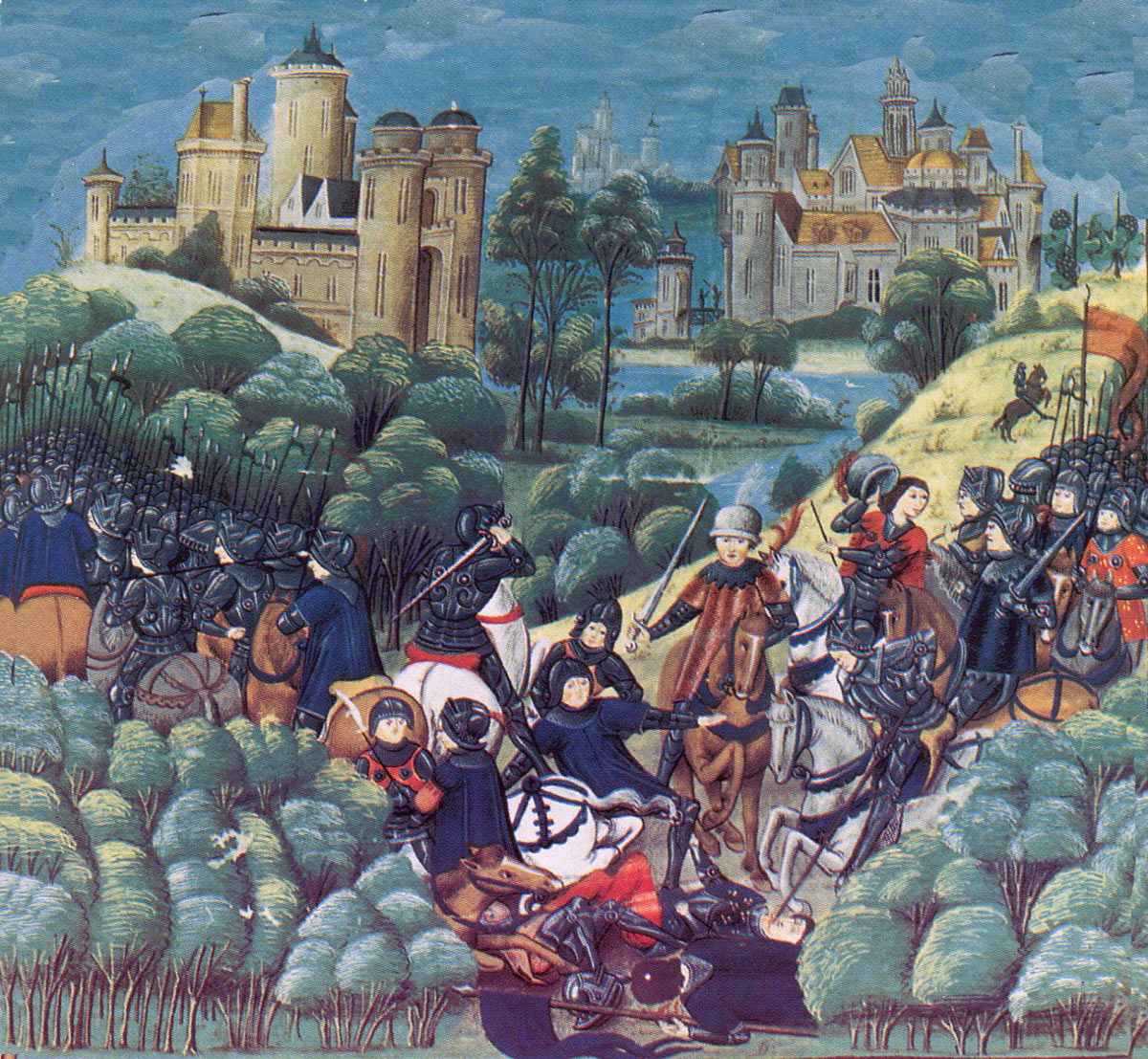Battle of Mortimer’s Cross

Background:
The Battle of Mortimer's Cross was fought on 2 February 1461 near Kingsland, Herefordshire (between Leominster and Leintwardine, by the River Lugg), not far from the Welsh border. It was a major battle of the Wars of the Roses. The opposing forces were an army led by Jasper Tudor and his father, Owen Tudor, and other nobles loyal to King Henry VI of the House of Lancaster, his wife, Margaret of Anjou, and their seven-year-old son, Edward, Prince of Wales, on one side, and the army of Edward, Earl of March. Some sources say it was fought on 3 February, and the exact location has been the subject of some speculation. In 1460, with King Henry VI a prisoner, Richard, Duke of York (father of Edward, Earl of March) attempted to depose Henry and become king himself. His closest supporters dissuaded him from this step, but he secured an Act of Accord by which he and his descendants would inherit the throne on Henry's death, thus disinheriting Henry's young son Edward, Prince of Wales. Inspired by Henry's queen, Margaret of Anjou, York's enemies and rivals began gathering armies in Wales and Northern England. York sent Edward of March, his 18-year-old eldest son, to gather support in the Welsh Marches while he himself led an army to the north. On 30 December, York led his men into a trap at the Battle of Wakefield where he was killed.
With York's death, his titles and claim to the throne descended to Edward of March, now 4th duke of York. He sought to prevent Lancastrian forces from Wales, led by Owen Tudor and his son Jasper, Earl of Pembroke, from joining the main body of the Lancastrian army. The elder Tudor had been second husband to Catherine of Valois, widow of Henry V; their sons (Jasper and Edmund Tudor), as Henry VI's half-brothers, had been made earls, and the family was a major power in South Wales. His army included Welshmen, drawn especially from the Tudor lands in Carmarthenshire and Pembrokeshire, along with French and Breton mercenaries and Irish troops led by James Butler, Earl of Wiltshire and Ormond. Edward, based at Wigmore Castle had gathered his army from the English border counties and from Wales. Among his leading supporters present were Lord Audley, Lord Grey of Wilton, Sir William Herbert of Raglan, Sir Walter Devereux and Humphrey Stafford. After spending Christmas in Gloucester, he began to prepare to return to London. However, Jasper Tudor's army was approaching and he changed his plan; to block Tudor from joining the main Lancastrian force which was approaching London, Edward moved north with an army of approximately five thousand men to Mortimer's Cross.
As dawn broke, the meteorological phenomenon known as parhelion occurred: three suns were seen to be rising. The appearance of this sun dog so soon before the battle seems to have frightened his troops, but Edward of York appears to have convinced them that it represented the Holy Trinity and that therefore God was on their side. He later took it as his emblem, the "Sun in splendour". The event was dramatised by William Shakespeare in King Henry VI, Part 3 (see below) and in Sharon Kay Penman's The Sunne in Splendour. One of York's advisers, Sir Richard Croft, a local lord from Croft Castle, recommended positioning archers at the crossroads (Roman Road and Ogilby Road) in order to halt the Lancastrian advance. Pembroke's army was about a thousand men smaller than York's and, being untried in battle at that point, may not have originally planned to fight but by midday it was clear that they would have to in order to cross the Lugg. The Lancastrians commenced the attack—Butler's 'battle' (division) led the first assault forcing Edward's right wing to retreat across the road, where this flank dissolved. Pembroke faced Edward's centre division and was held off but, most decisively, Owen Tudor attempted an encirclement of the Yorkist left wing; his ‘battle’ was defeated and a rout commenced. Pembroke's centre then also broke and the battle was won. Owen Tudor's men were now in full flight: some of them were followed as far as Hereford, approximately seventeen miles (27 km), and where Owen was himself captured and beheaded.
The battle having intruded on York's plans to march to the midlands, Richard Neville, Earl of Warwick, with the captive King Henry in his train, was meanwhile forced to move to block Margaret's army's route to London on his own. He took up position north of St Albans astride the main road from the north (the ancient Roman road known as Watling Street). Although he lost the battle that followed, and Margaret of Anjou and her army could now march unopposed on to London, they did not do so. The Lancastrian army's reputation for pillage caused the Londoners to bar the gates. This in turn caused Margaret to hesitate, as did the news of the Yorkist victory at Mortimer's Cross. The Lancastrians fell back through Dunstable, losing many Scots and Borderers who deserted and returned home with the plunder they had already gathered. Edward of March and Warwick entered London on 2 March, and Edward was quickly proclaimed King Edward IV of England. Within a few weeks he had confirmed his hold on the throne with a decisive victory at the Battle of Towton.
Source: Wikipedia
| |||||||
| Belligerents | |||||||
|---|---|---|---|---|---|---|---|
|
|
| ||||||
| Commanders and leaders | |||||||
| Strength | |||||||
| 5,000 | unknown | ||||||
| Casualties and losses | |||||||
| unknown | 4,000 | ||||||

Comments
Post a Comment